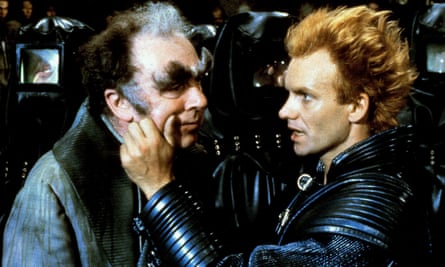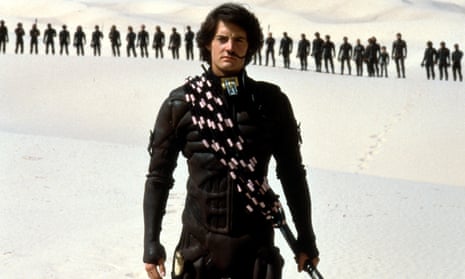Riddle of the sand
13 December 1984
The list of directors who contemplated making Frank Herbert’s Dune is a long one. Jodorowsky, the eccentric surrealist who accomplished El Topo and The Magic Mountain was the one who got nearest. And that I would have liked to have seen, though possibly Herbert wouldn’t.
Herbert, however, has expressed himself satisfied with David Lynch’s multimillion dollar summation for Dino De Laurentiis, and it is certainly accomplished, cramming a lot into just over two hours, though depth is inevitably sacrificed for width. Yet if Dune on the screen still seems a little like skimmed milk after cream, it was perhaps predictable. Only one other venture this year has seemed more impossible to translate from book to films, and that was Huston’s version of Under The Volcano.
Lynch, of course, made Eraserhead, the cult horror movie produced on a shoestring, that led to The Elephant Man. And there’s no doubt that he is a real film-maker, rather than just a competent orchestrator of resources that even Croesus wouldn’t readily contemplate tying up in a year’s orgies. That shows through immediately. Dune is an epic that vouchsafes eyeful after eyeful, aided by Freddie Francis’s glowing, dark-hued cinematography.
The film does not lack an overall strategy. Which if I read it right, is to gut the literary origins for a recognisable plot and then to hint at some of its many sub-themes.
The trouble is that, no matter how hard it tries to make Herbert understandable to those who find the saga resistible, or even to make Dune hang together for devoted fans, there is an overwhelming sense that this is familiar cinematic territory.

The Star Wars cycle, and even the Star Trek episodes, have left an indelible mark that Dune can’t entirely erase. No matter what original production designs Anthony Masters can come up with, it has all been done, better or worse, before. What seemed unique on the page now seems slightly old hat on the screen.
All this is a back-handed but genuine tribute to Herbert whose ideas have been copied almost as much by now as Kubrick’s in 2001. And there isn’t a lot Lynch and his experts can do about it. The battle for the spice which can only be found on the bleak wastes of Dune, and for which the House of Atreides and their mortal enemies, the Harkonnens, compete, is essentially a battle between good and evil, peopled by the usual representations of humanity endowed with superhuman powers.
Herbert’s ancillary themes which, knitted together in book form, allow an equally potent gallery of ideas to be gradually formulated, are well beyond the rather wooden characters on display, no matter how hard Kyle MacLachlan, Francesca Annis, Sting and other more veteran talents try to invest their lines with meaning.
What we see is a long, slow, often majestically visualised approximation of Herbert’s magnum corpus, with every effect carefully thought out and brilliantly decorated with endless detail. It’s a pageant you have to admire in retrospect. But at the time one feels vaguely cheated.
Frank Herbert’s book Dune was reviewed by JG Ballard in the Guardian on 19 August 1966

Comments (…)
Sign in or create your Guardian account to join the discussion